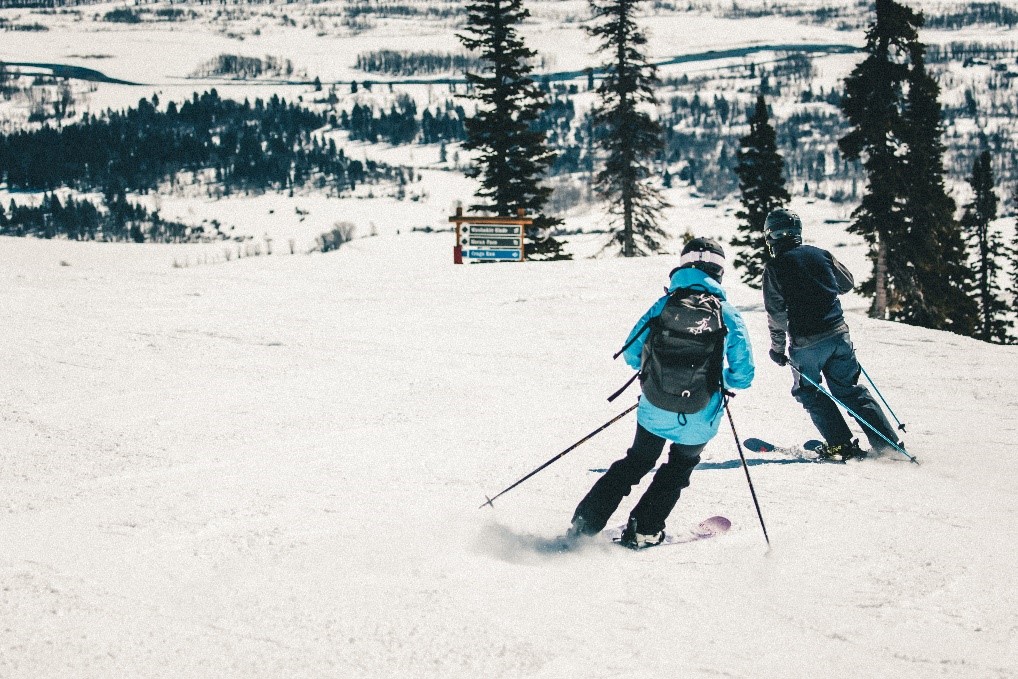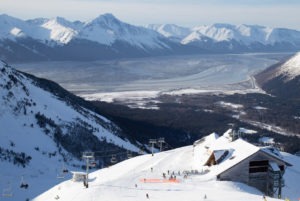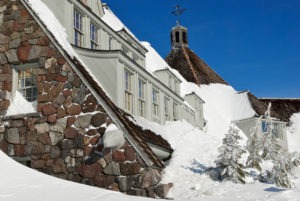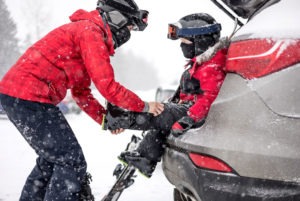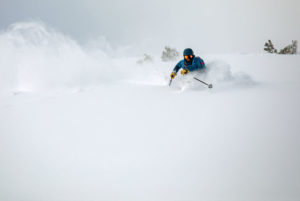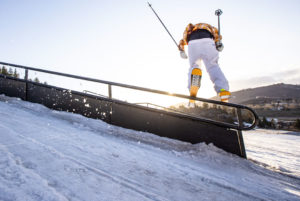When starting out on your skiing journey, it’s easy to feel overwhelmed by all of the ski gear available, the tech, hard goods, accessories, and more.
Sure, all of us want the best, but taking into account budget, skill level, and other variables, the “best” available gear might not be well suited for a new skier or beginner looking to stop renting and build their set-up.
When it comes to getting your first ski set-up, whether that be for men or women, don’t stress too much! At the end of the day, what matters is getting out on the slopes and having a good time. So, get the best ski gear essentials for your ability level and learn your preferences and upgrade your gear along the way.
Choosing the Right Gear
Two of the most important pieces of equipment to consider when you’re buying gear are your skis and ski boots. These are often the most expensive items in your skiing kit and can make a huge difference on the mountain, so they deserve a great deal of thought!
The Ski
When it comes to choosing a ski, select a pair that are oriented toward beginners and those still progressing. As a novice skier, most time spent on the slopes is on groomers, so all-mountain skis will be the best bet. If you are looking to get more into freeriding or park skiing as you progress, consider purchasing a ski that will transfer styles well.
Be sure to choose skis that are an appropriate length for your size and weight. Skis that are too long will be difficult to maneuver, if they are too short, they will feel unreliable. As your skills advance and you begin to define your riding style, you will grow to learn what you like.
The Ski Boots
If you have only ever skied in rental boots, a brand-new pair will feel quite different! Instead of a day out on worn-in boots that everyone has used, a new pair will need to be broken in. While the short break-in period will not begin as comfortable, after a day or two, they will naturally heat mold to the shape of your feet, providing a custom feel each time you hit the slopes.
Once you have your new pair of ski boots, if you have not consulted an expert on sizing, there are a few things to keep in mind. Your toes should touch the end of the boots, they should feel snug and secure. However, there should be no pain or uncomfortable pressure points. Remember, they will pack out and heat mold!
If you want them to be as comfortable as possible starting day one, have them heat molded at a local shop. If you are having a difficult time finding a pair of boots you love, consult your local expert for sizing tips.
For your first pair of boots, you will want an easy going softer flex, providing you with all-day comfort.

The Ski Bindings
When choosing ski bindings, first, determine the waist width of your skis. The waist width of your ski will help determine what size brakes you will need. To accurately determine the bindings’ release force setting (DIN), you must keep in mind your weight and your ability level. Consult with an expert to have your ski bindings properly mounted to your skis.
If you don’t feel like fussing with ski tech, consider a skis and bindings package to help simplify the buying process.
Ski Clothing
One of the most important parts of your gear for a comfortable and fun day on the slopes is ski clothing, for adults and kids. The quality of skis you have will not matter if you are caught cold and wet mountainside. Must-haves to get started are a ski jacket, ski pants, and ski mittens or gloves.
Underneath your outerwear it is important to layer, so you can add and remove as you become hot or cold, or a layer becomes wet. Ski specific base layers (or you can utilize clothing you have already like athletic wear or fleece jackets) are the best way to do this. The ideal base layer should have moisture wicking properties to prevent any sweat from making you cold.
Find out more about what to wear skiing, so you can enjoy the slopes all day.
Ski Helmets
As you’re building your kit, don’t underestimate the importance of ski helmets. Helmets provide warmth, protection, and even confidence, so you can try new things and progress knowing you have done the best you can to protect yourself.
When it comes to helmets, fit is essential for proper protection. Make sure you have a properly fitted helmet before your next outing!
Ski Goggles
A quality pair of ski goggles are one of the most helpful pieces of equipment. Goggles help to distinguish terrain, helping you avoid icy spots, anticipate grade changes more easily, and spot obstacles. They also protect you from snow, rain, and UV rays. Check out our top goggle picks for the kids!
Skiing Accessories
Some would argue these accessories are a must, others never bring them with, you will learn over time what works for you!
Ski poles are considered an essential for new skiers, start with them and leave them behind as you see fit.
It might seem easy to throw on any old pair of socks but once you start using ski specific socks, you’ll never look back! They are designed to be a comfortable height for boots, keep you warm, and wick moisture.
Another essential, a neck gaiter, balaclava, or facemask will keep you warm and protect you from snow and wind. Depending on the style you get they will vary in warmth. Some styles cover your neck, mouth, wrap around, and even have hoods.
There are plenty of other ski essentials to be had, such as glove liners, wax, beanies, and more!
When you are shopping for your ski set-up that you will build up your gear over time!Consider your riding style and skill level whenever you are shopping for new gear. Remember, at the end of the day, you are going to want to invest in things that help you get the most out of your skiing experience. And above all else, have fun!
